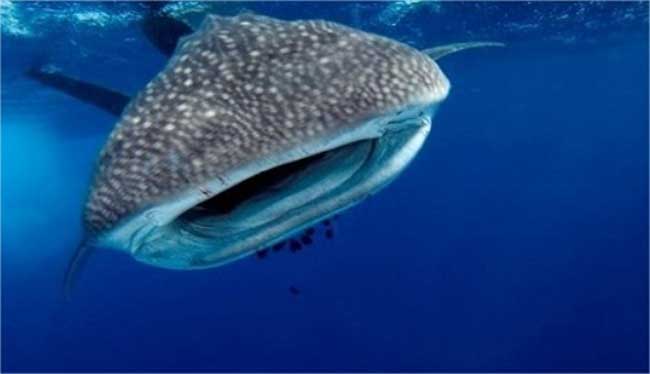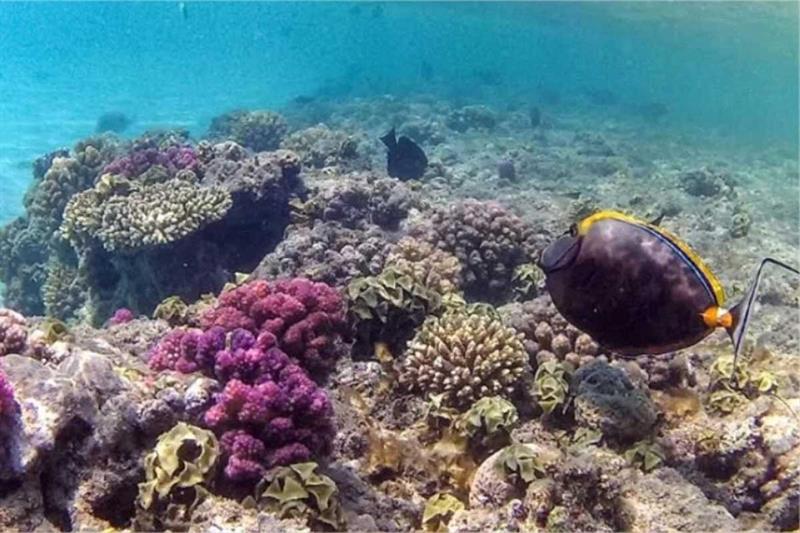The group of endangered species listed below is based on the internationally recognized Red List of World Marine Threatened Species issued by the International Union for the Conservation of Nature (IUCN), a 1948 global conservation heavyweight composed of both governments and composed of NGOs.
Sea Turtles (Green Sea Turtles and Hawksbill Turtles)
For decades there has been a myth in Egyptian coastal towns on both the Red and Mediterranean that a turtle’s blood (Tersa) confers health and immunity to disease, although such folk tales never came into play to deal with threats the sea turtles faced.
Despite the fact that sea turtles have lived on earth for 200 million years, have witnessed the extinction of many animals and appeared to be tolerant and adaptable to extreme climate changes, it is only recently that a huge decline in their numbers and aggregations has been observed worldwide, leading to a major weakness, they have: nesting on sandy beaches.
According to Mahmoud Hanafy, professor of marine biology at the University of the Suez Canal, there are five species of sea turtles in the Red Sea, two of which are among the most endangered species: the green turtle and the hawksbill turtle.
“Both nest on the beaches of the Red Sea Governorate, particularly on the Red Sea islands, and therefore these islands should be under protection,” Hanafy told Ahram Online.
The Red Sea Governorate officially has 39 sea islands, most of which are already nature reserves.
The green sea turtles, for example, dig a hole and nest their eggs and then return to the sea while the eggs remain in the nest for 50-55 days before hatching. The juveniles migrate east to the seawater, where they grow and live in the sea for over 25 years until they become adults and repeat the cycle.
“The mother turtle returns to the same beach where she hatched as an egg to lay her own eggs like her mother, and so these turtles are associated with these sandy beaches,” explained the marine biology professor, adding that nesting Location of these turtles became their own challenge.
It was challenging as “beaches now have their economic importance for tourism, industrial and coastal development,” he said.
Hanafy explained that more people are now living on the coast near the beaches, and more hotels and resorts are being built on the beaches, while other beaches are being converted into harbors, leaving a smaller nesting area for female turtles.
When the turtle returns to its nesting and breeding beach and finds that it has been urbanized, it has only two choices; It either nests the eggs in the water or it takes the eggs back into its body.
“When we destroy a turtle nesting site, we destroy the turtles’ ability to reproduce to survive,” he added.
“The nesting beaches represent places of tremendous value, and as human activities increased on their beaches, the nesting beaches deteriorated.”
Egypt prohibits the sale and hunting of sea turtles under local law as well as in accordance with international treaties.
In 1978, Egypt was one of the first countries to sign the Convention on International Trade in Endangered Species of Wild Fauna and Flora (CITES) to protect endangered plants and animals from the dangers of international trade.
Egyptian Nature Reserves Law 102/1983 prohibits activities that destroy, damage or degrade the natural environment, wildlife, marine life and plant life or affect their ecosystem.
It also prohibits hunting, transporting, killing or disturbing any wildlife or marine life on these reserves.
The Environment Law 4/1994 prohibits the hunting, killing or trapping of wild birds and endangered animals or species.
Penalties for breaking the law range from fines – between EGP 500 and EGP 50,000 – to imprisonment for a maximum of one year.
The country’s Dar El-Ifta, the highest institution for religious edicts based on Islamic Sharia, bans sea turtle hunting.
Recently, the Egyptian Environment Ministry, working with local animal rights activists, managed to rescue several sea turtles and bring them back to the sea before they were sold on the market.
The Hurghada Environmental Protection and Conservation Association (HEPCA), Egypt’s leading marine NGO, launched several projects and initiatives over the past decade, including Turtle Watch, Turtles of the Red Sea and a Beach Nesting awareness campaign.
Working with several beaches and hotels, HEPCA launched a campaign to conserve turtle nesting sites on urbanized beaches by creating a safe zone for turtles and their young.
The dugong

Commonly known as the “mermaid” and sometimes the “sea cow” in Egypt, the dugong is one of the world’s most endangered marine species due to the loss of seagrass habitat due to coastal development and marine pollution.
“This marine mammal is an endangered species, but recent studies of the Red Sea concluded that dugong numbers began to increase when it was widely believed they were beginning to disappear globally,” Hanafy said.
The professor believes that the number of dugongs in Egyptian waters began to increase again due to protection as people began to unleash that they can be an important source of income for the Egyptian economy.
“A dugong in Abu Dabbab Bay in the Red Sea Governorate alone can bring in $1.8 million from divers and snorkelers who come from all over the world to see it,” Hanafy said, adding that these mammals represent a tremendous economic opportunity for Egypt.
“The dugong must be protected,” he said, adding that Red Sea fishermen do not eat it and believe that fishing is an ill omen, unlike in other parts of the world.
In 2007, HEPCA, the Egyptian Ministry of Environment and the Red Sea Governorate developed a management strategy to protect Abu Dabbab Bay and its inhabitants, including sea turtles and dugongs.
whale shark

Whale sharks, commonly referred to as “Bahloul” by local fishermen, are the largest known extant fish species. The largest confirmed whale shark measured 12.65 m (41.5 ft) in length and weighed about 21.5 t (47,000 lb), while its height typically ranges from five to 10 meters.
They are an endangered species. The appearance of the Red Sea whale shark is an annual phenomenon, especially at the beginning of the spring season in the Red Sea and in summer in the southern parts of the country.
Several whale sharks have been sighted in the Red Sea since July 2016. Sightings have been reported in Port Ghalib, in the Fanous area and between the Geftoun Islands, according to the Red Sea Wildlife Sanctuaries Administration.
“The whale shark is not a predator, on the contrary, it is a filter feed creature, meaning it feeds by filtering suspended matter and food particles from the water, typically by passing the water over a special filter structure,” Hanafy explained.
Hunting and fishing are the biggest challenges for whale sharks.
Hunting whale sharks is banned in Egypt because the animal is considered an important part of the Red Sea ecosystem.
The Napoleon Fish
According to Hanafy, Egypt had large numbers of napoleons in the Red Sea, but their numbers were declining thanks to illegal fishing.

“Sometimes it gets tangled in fishing nets,” he told Ahram Online, adding that it must be protected in accordance with the law and international treaties.
Since 2004, the Napoleon fish has been listed as Vulnerable on the IUCN Red List of Threatened Species.
Egyptian divers have repeatedly warned of the disappearance of the giant fish, which is also an attraction for foreign divers.
In 2017, the colorful fish made national headlines when it was revealed that a Red Sea hotel featured it on its menu. The Environment Ministry launched an investigation into the matter and reminded the public that it was illegal to fish a Napoleon.
Not endangered, but still on the affected list
dolphins
While dolphins are not an endangered species, Hanafy says they are currently under tremendous pressure as they represent economic opportunities as a tourist product.
“Most people protect them in the Red Sea,” he said.
A single dolphin can generate $91,000 annually as a tourism product and create many jobs, starting with trainers, divers and drivers, he explained, citing studies conducted in Egypt on the dolphin house area in the Samadai Conservation Area.
coral reefs
The Red Sea coral reef is probably the last surviving coral reef in the world, while almost all other reefs are dying due to climate change.
“The tolerance of the Red Sea reef to climate change and its rising temperature is remarkable, unlike in Australia, which has lost over 50 percent of its great barrier reef,” Hanafy explained.
He calls for the protection of Egyptian coral reefs.
Currently, HEPCA is launching “Bleach Watch Egypt” as part of Climate Change and Coral Reef in collaboration with IUCN. Coral bleaching is the result of rising water temperatures and this is where the importance of coral monitoring and care comes into play.
Bleach Watch Egypt launched a series of workshops and training for a coral monitoring program along the Red Sea coast and other activities to educate divers and trainers.
The Red Sea appears to be the last stronghold against climate change for now, but no one knows if it will hold up as Earth’s temperature continues to rise.
Short link:

